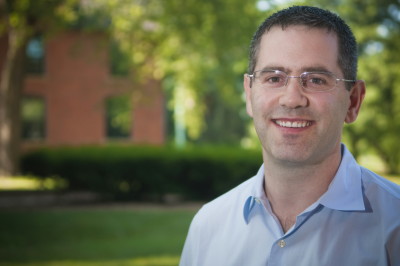Nearly 1 million children misdiagnosed with ADHD due to being born later than their grade level

Many people have probably noticed that in kindergarten or the lower grades of elementary school, children born in April are often the 'teacher's favorites' who listen well to teachers and are good at studying and sports, while those born in March are often the troublemakers in class and are treated as 'problem children.'
In the United States, where awareness of
For more information, see: Nearly 1 million children potentially misdiagnosed with ADHD, study finds | MSU News | Michigan State University
NCSU News :: NC State News and Information » Study Shows Birth Dates, School Enrollment Dates Affect ADHD Diagnosis Rates
According to these articles, of the more than 4.5 million children diagnosed with ADHD, one in five are likely to have been misdiagnosed because they were born later in their school year, meaning that 'when a five-year-old behaves like a five-year-old, they appear less calm than their six-year-old classmates.' If these children are being prescribed Ritalin as a result of a misdiagnosis, there are concerns about the long-term health effects, and experts point out that $500 million (approximately 43 billion yen) is being wasted annually.
In the United States, where characters with ADHD often appear in movies and TV dramas and where celebrities from Magic Johnson to Paris Hilton have publicly stated that they have been diagnosed with ADHD, terms like 'ADHD' and 'hyper' are commonly used to describe people, and it is common for teachers to suspect that restless, impulsive children may have the condition and refer them to specialists. However, Ritalin ( methylphenidate ), which is prescribed for ADHD, is a drug that is often abused and highly addictive due to its stimulant-like effects, and neurological diagnostic methods such as blood tests and EEG measurements have not yet been established, so there is ongoing debate about how many ADHD patients are 'misdiagnosed' or 'malingering.'

Two separate studies, conducted by Associate Professor Todd Elder of Michigan State University and Associate Professor Melinda Morrill of North Carolina State University , have come to the same conclusion: 'Many children are misdiagnosed with ADHD because they were born later in their school year.'
It is also important to prevent cases where adults around a child do not realize that the child has ADHD, causing the child to struggle academically and socially due to symptoms that would improve if the child were properly diagnosed and given drug treatment. However, on the other hand, children who do not have ADHD can also be considered victims when they are misdiagnosed with ADHD and put at risk of side effects from medication or an increased likelihood of developing drug dependence in the future.
Additionally, according to estimates by University of Michigan Associate Professor Elder, approximately $320 million to $500 million (approximately 27.5 to 43 billion yen) is spent annually on drug treatment for children misdiagnosed with ADHD, of which $80 to $90 million (approximately 6.9 to 7.7 billion yen) is paid for by Medicaid (the public health insurance system), resulting in a waste of taxpayer money.

Elder's research used data from approximately 12,000 people from the Early Childhood Longitudinal Study to compare the percentage of children diagnosed with ADHD and receiving medication between the earliest and latest born children in the same kindergarten grade.
The results showed that children born on the cut-off date (which varies by state in the US, but is the date by which children who are not yet 5 years old can enter kindergarten; in Japan, it is April 1st) were 60% more likely to be diagnosed with ADHD than children born just after the cut-off date (April 2nd in Japan). Furthermore, by the time these children reached eighth grade (equivalent to the second year of junior high school in Japan), the youngest children in their grade were twice as likely to be prescribed psychotropic medications as the oldest children.
This pattern was similarly clear when comparing children within different states with different cutoff dates, and when comparing children born around the same time who were 'early born' or 'late born' because their states had different cutoff dates.
For example, in Michigan, where the cutoff date is December 1st, children born on December 1st (the youngest in their grade) are more likely to be diagnosed with ADHD than children born on December 2nd (the oldest in their grade). Children born in August (equivalent to March in Japan) living in Illinois, where the cutoff date is September 1st, have a higher rate of ADHD than children born in December (equivalent to December in Japan) living in Michigan.
While ADHD is diagnosed by a specialist, in kindergarten and early elementary school children, where ADHD is most often discovered, the diagnosis is heavily influenced by teachers' observations of children's behavior in class, says Professor Elder.
Professor Elder's study ultimately concluded that 20% of all children diagnosed with ADHD are likely to be misdiagnosed due to being relatively young for their grade level. This means that there are currently approximately 900,000 children in the United States who are misdiagnosed with ADHD because they were born later in their grade level.
'If you have a child who is inattentive, fidgety, and unable to sit still, that may simply be because they're a 5-year-old among 6-year-olds,' Elder said. 'There's a big difference between a 5-year-old and a 6-year-old, and teachers and health care providers should take that into account when diagnosing whether a child has ADHD.'

Meanwhile, a study by Associate Professor Melinda Morrill and her colleagues at the University of North Carolina used data from the National Health Survey and private health insurance, and used various methods similar to those used by Associate Professor Elder, to analyze the difference in ADHD diagnosis rates between young and old children in their grade level. They found that children born just after the cutoff date (the oldest in their grade) were 25% less likely to be diagnosed with ADHD than children born just before the cutoff date (the youngest in their grade).
Even if we assume that the season of birth, such as being born in a cold or hot season, somehow affects the incidence of ADHD, research has shown that children born in the same season have significantly different rates of being diagnosed with ADHD depending on whether their birthday is just before or just after the cut-off date, so the seasonal effect can be ignored.
'This suggests that some children may or may not be diagnosed with ADHD due to factors other than underlying biological or medical reasons,' says Associate Professor Morrill. Given that the incidence of ADHD among children born in the same season should be consistent, a reasonable explanation for the difference in diagnosis rates is that a 6-year-old may be behaving like a 6-year-old in an environment surrounded by 7-year-olds, and therefore appearing restless, or that a 6-year-old may be behaving like a 6-year-old in an environment surrounded by 5-year-olds, and therefore appearing calm.
For example, if identical twins who behave similarly and have the same risk of developing ADHD are born on different cut-off dates and therefore enter different grades, the first-born twin may be surrounded by older classmates and appear younger in class, while the later-born twin may be surrounded by younger classmates and appear more mature. Even if the twins behave similarly in their respective classes, their respective homeroom teachers may have completely different opinions when diagnosing them for ADHD.

Photo by Oude School
Reducing misdiagnosis of ADHD in younger children in the school year could reduce medical costs and mitigate health risks, such as side effects, in children who would not otherwise need medication, so this may be an important issue to address in the future. When teachers observe children, it seems that the key to preventing misdiagnosis is to consider whether the child is older or younger in their school year, and to keep in mind that there is a big difference between a 5-year-old and a 6-year-old.
Addendum, August 20, 2010, 11:42 AM: The data used in Associate Professor Elder's study were from children who entered American kindergarten (the year before first grade, equivalent to the senior year of kindergarten in Japan) in the school year beginning in September 1998. The data on the percentage of children receiving medications, including Ritalin and its generics, were from the time those children reached fifth and eighth grade (2003 and 2006). This does not mean that they were prescribed Ritalin in kindergarten.
Related Posts:







